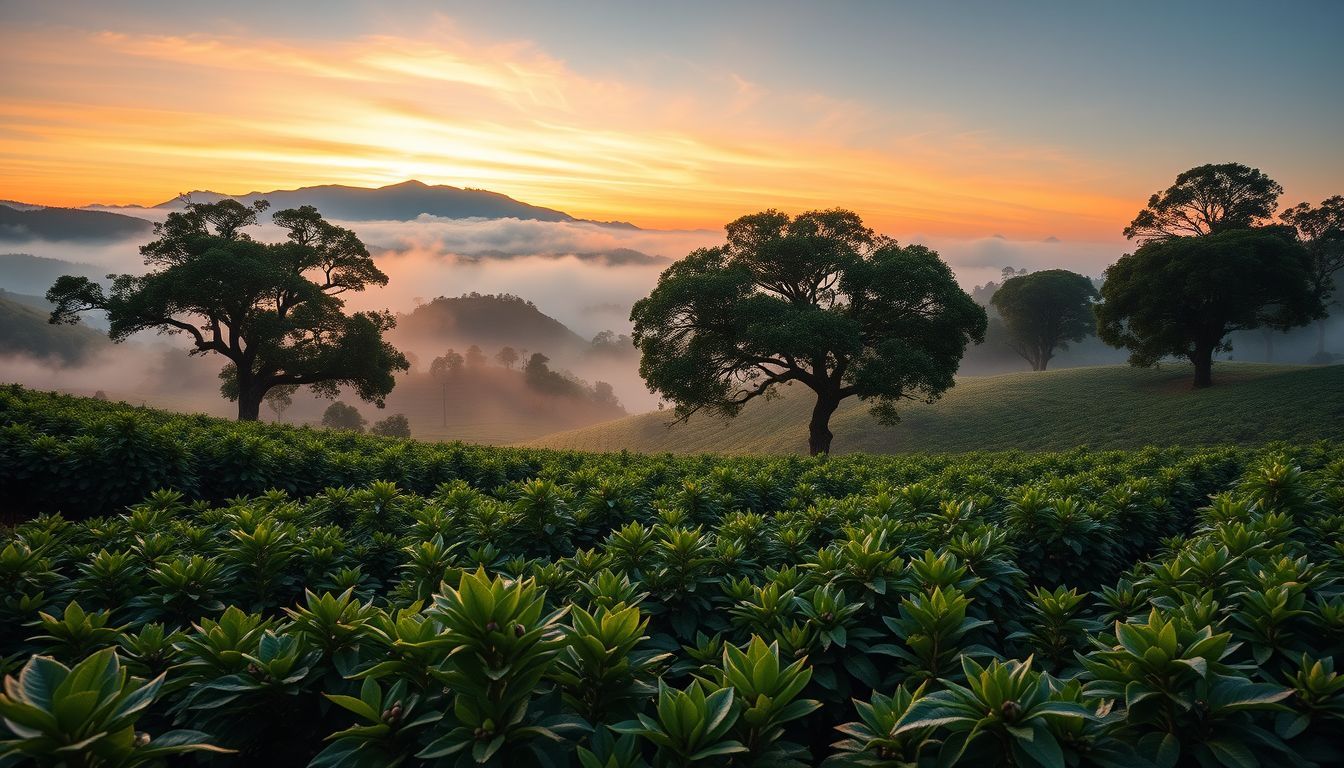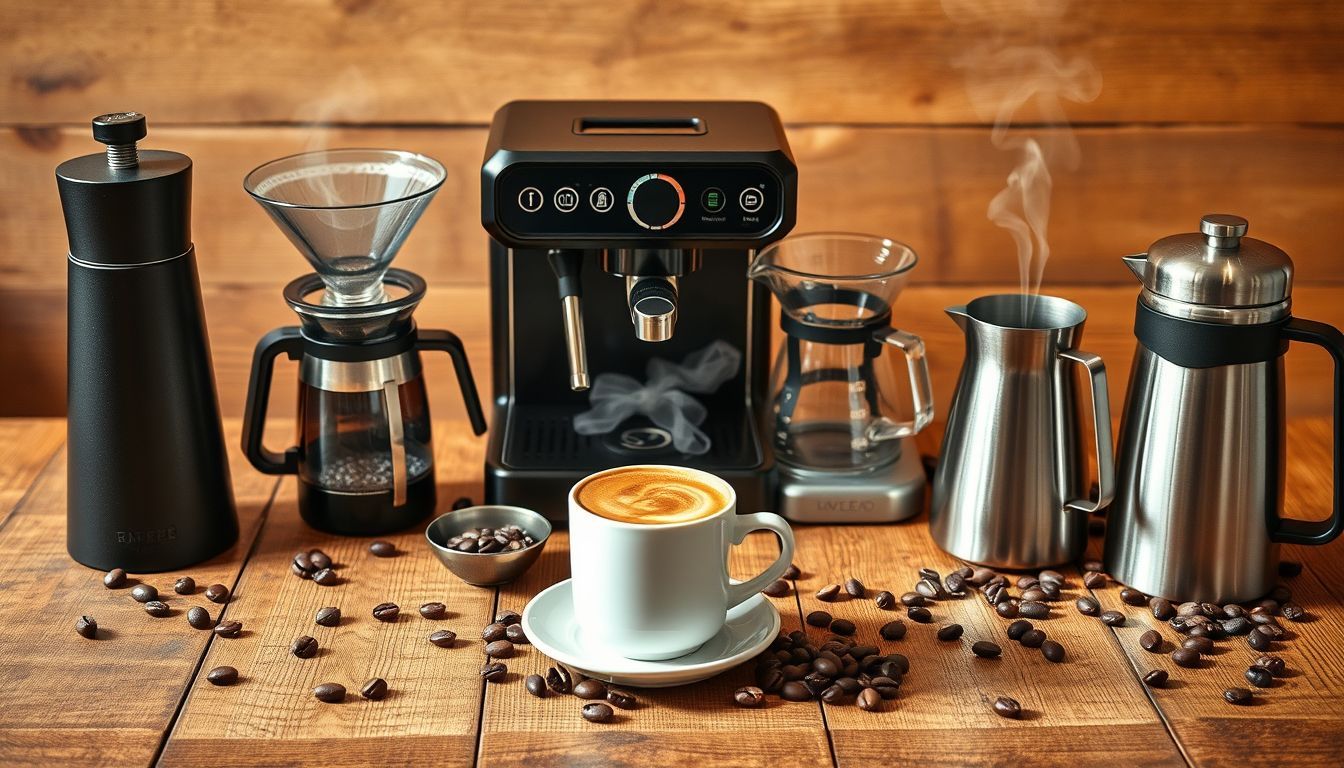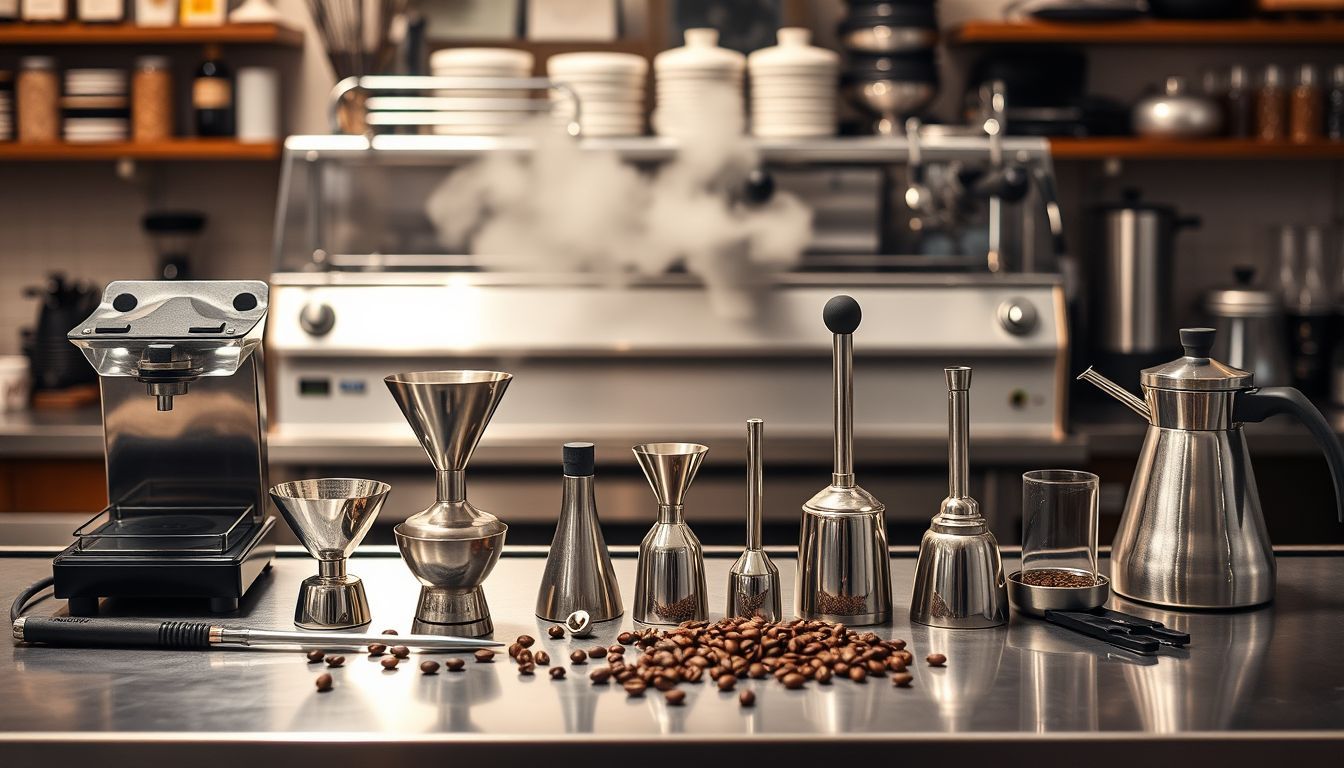Best Coffee Beans for Making Café-Style Drinks
Transform your home brewing into a café experience with the right beans. From espresso blends to single origins, discover which coffee beans create the perfect foundation for your favorite café drinks.
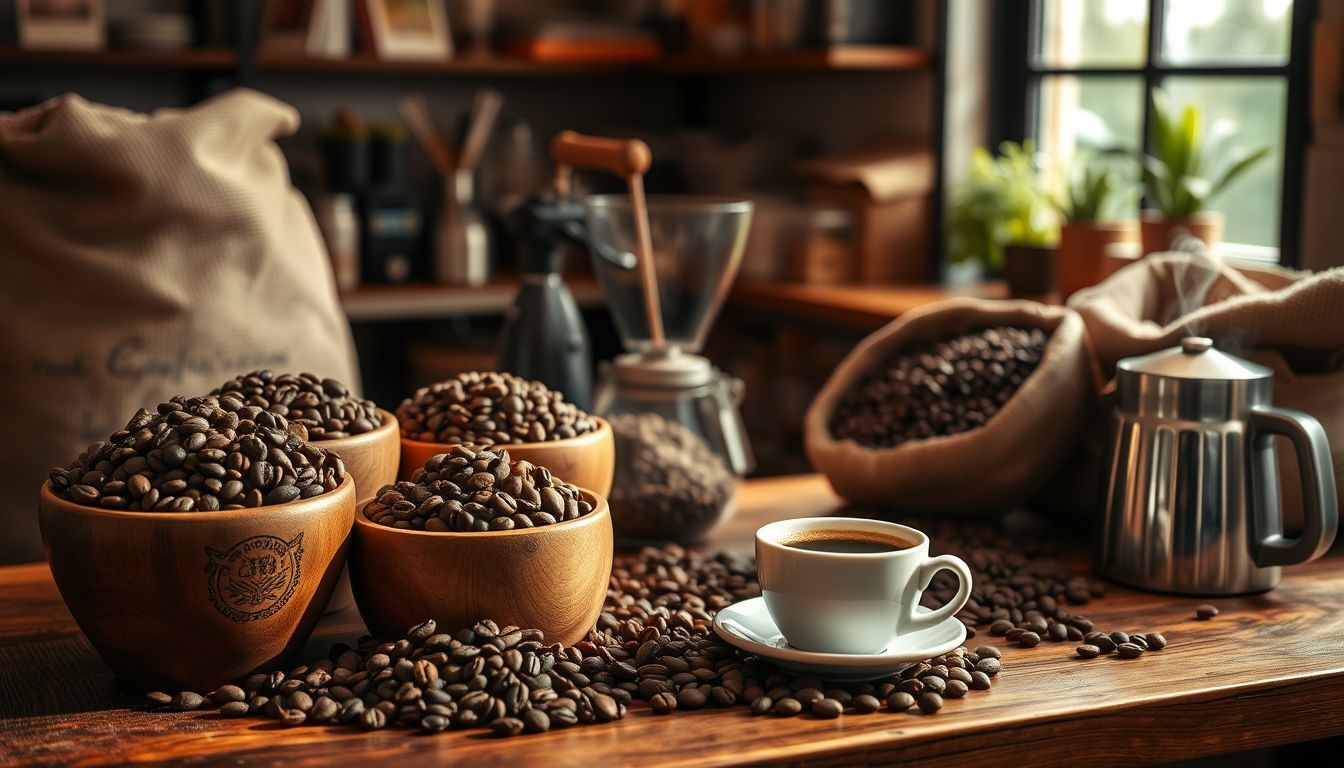
The Complete Guide to Choosing Coffee Beans for Café-Style Drinks at Home
There's something magical about walking into a café and being greeted by that rich, complex aroma of expertly crafted coffee. As someone who's spent years perfecting drinks behind the counter and now helps others recreate that café magic at home, I can tell you that the secret isn't just in the technique—it all starts with choosing the right beans.
Whether you're pulling shots for a morning cappuccino or crafting the perfect cold brew for an afternoon pick-me-up, the beans you choose are the foundation of every great café-style drink. Today, I want to share with you the knowledge I've gathered from years of cupping, brewing, and serving thousands of drinks, so you can bring that authentic café experience right into your kitchen.
The journey from coffee farm to your cup involves countless decisions that affect flavor, and understanding these choices will transform you from someone who simply drinks coffee to someone who truly appreciates and crafts exceptional coffee experiences. This isn't just about following recipes—it's about developing an intuitive understanding of how coffee works, what makes certain beans special, and how to unlock their full potential in your home setup.
Understanding the Foundation: What Makes Café-Quality Beans

Before we dive into specific recommendations, let's talk about what separates café-quality beans from your average grocery store coffee. When I source beans for my café, I look for three key characteristics: freshness, origin transparency, and roast consistency. But there's so much more to the story.
The Science of Coffee Freshness
Fresh coffee beans are like fresh bread—there's simply no substitute. Ideally, you want beans roasted within 2-4 weeks of brewing. This is when the coffee's natural oils and flavor compounds are at their peak, giving you those complex notes that make café drinks so memorable. Look for roast dates on packaging, not just "best by" dates.
The degassing process: Immediately after roasting, coffee beans release CO2 in a process called degassing. This is why you'll sometimes see one-way valves on coffee bags—they allow CO2 to escape without letting oxygen in. For espresso, you actually want beans that have had 3-7 days to degas, as the CO2 can interfere with proper extraction. For pour-over methods, fresher is generally better, with 1-3 days post-roast being ideal.
Chemical changes over time: As coffee ages, the volatile compounds that create those delightful aromas begin to break down. The oils in the beans can become rancid, leading to off-flavors. Light roasts tend to retain their character longer than dark roasts, but all coffee is on a countdown timer from the moment it's roasted.
Pro tip: Many specialty roasters now print roast dates directly on their packaging. Brands like Counter Culture Coffee and Intelligentsia have made this standard practice, ensuring you know exactly when your coffee was roasted. Some even include harvest dates and processing information, giving you the full timeline from farm to bag.
The Coffee Processing Revolution
Understanding how coffee is processed after harvest can dramatically change your bean selection strategy. The processing method affects everything from body to acidity to sweetness.
Washed (Wet) Process: The traditional method where the fruit is removed before drying. This typically produces cleaner, brighter coffees with more pronounced acidity and clarity of flavor. Perfect for highlighting origin characteristics.
Natural (Dry) Process: The entire cherry is dried with the bean inside, creating fruity, wine-like flavors with more body and sweetness. These coffees can be more complex but sometimes less consistent.
Honey Process: A hybrid method where some fruit is left on during drying. Creates a balance between the clarity of washed coffees and the sweetness of naturals.
Experimental Processing: Modern producers are experimenting with fermentation, carbonic maceration, and other techniques borrowed from winemaking, creating entirely new flavor profiles.
Origin Matters More Than You Think
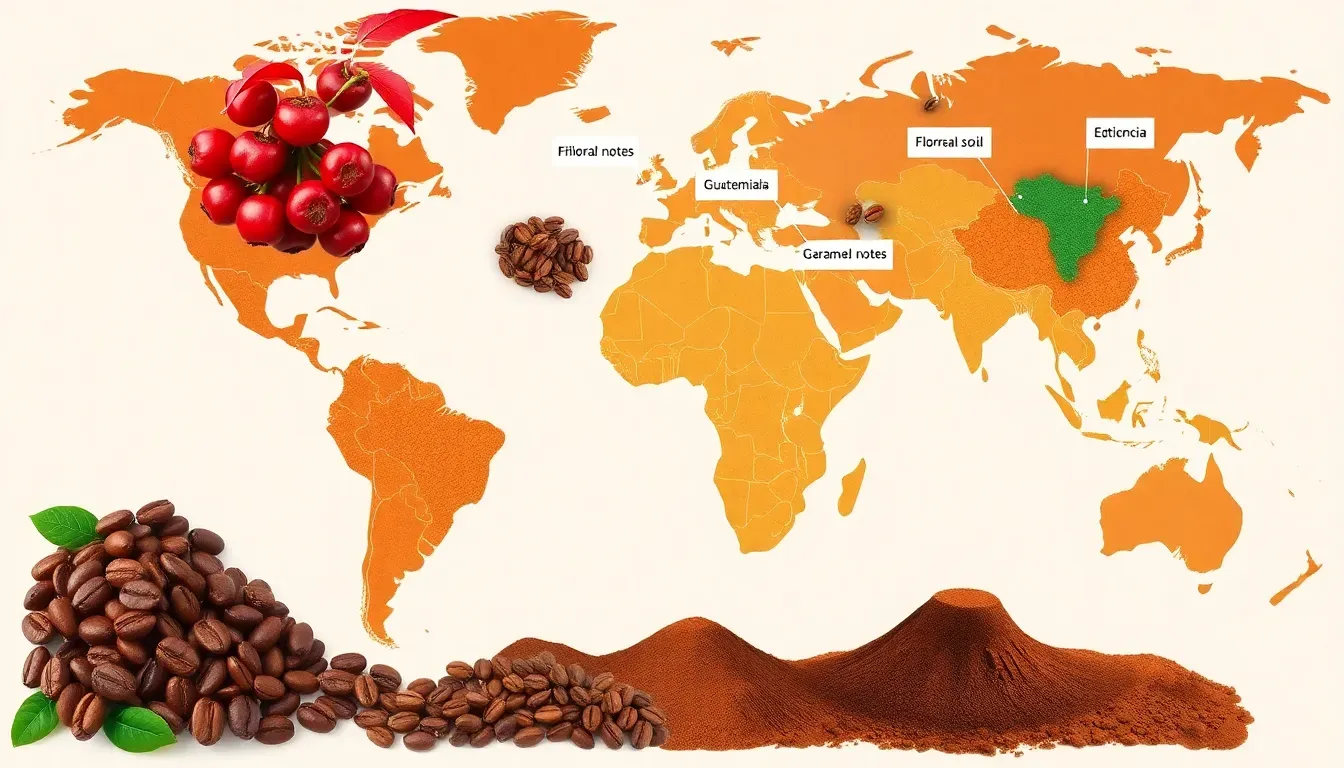
Knowing where your coffee comes from isn't just about being trendy—it's about understanding flavor profiles. Ethiopian beans bring bright, floral notes perfect for pour-overs, while Brazilian beans offer the chocolatey richness that makes espresso sing. When roasters provide detailed origin information, it shows they care about quality and traceability.
Terroir in coffee: Just like wine, coffee expresses its environment. Altitude, soil composition, rainfall, and temperature all influence flavor. Ethiopian Yirgacheffe grown at 2,000+ meters will taste completely different from Brazilian Santos grown at sea level, even if they're the same varietal.
Varietal importance: Different coffee varieties (Bourbon, Typica, Geisha, SL28) have distinct flavor characteristics. Geisha varieties are prized for their floral, tea-like qualities, while Bourbon varieties often show more sweetness and body.
Seasonal awareness: Coffee harvests vary by region. Central and South American coffees are typically harvested from October to March, while African coffees are often harvested from October to January. This means the freshest Central American beans arrive in North American markets from December to May, while the freshest African beans arrive from January to June.
Direct Trade vs. Fair Trade: Look for roasters who practice Direct Trade, building relationships directly with farmers. This often results in higher quality beans and better compensation for growers than traditional Fair Trade models.
The Science Behind Roast Levels
Understanding roast development is crucial for selecting the right beans for your brewing method. Roasting is essentially controlled pyrolysis—the breakdown of complex compounds through heat.
Light Roasts (City to City+)
Light roasts preserve most of the bean's original characteristics. The first crack (around 385°F) marks the beginning of light roast territory. These beans will be more acidic, with pronounced origin flavors and often floral or fruity notes.
Best for: Pour-over methods, French press, cold brew (when you want brightness) Flavor profile: High acidity, complex fruit and floral notes, tea-like body Grind considerations: Light roasts are denser and require slightly finer grinds for optimal extraction
Medium Roasts (Full City)
The sweet spot for many coffee drinkers. Medium roasts balance origin character with roast development, creating caramelization that adds sweetness while preserving complexity.
Best for: Drip coffee, pour-over, espresso blends Flavor profile: Balanced acidity and sweetness, chocolate and caramel notes emerging Why it works: The Maillard reaction has fully developed, creating complex flavors without overpowering origin characteristics
Medium-Dark to Dark Roasts (Full City+ to French)
As you move into darker territory, roast flavors begin to dominate origin characteristics. Second crack (around 435°F) marks the beginning of dark roast territory.
Best for: Espresso, milk drinks, cold brew concentrate Flavor profile: Lower acidity, prominent chocolate and caramel notes, fuller body Trade-offs: Less origin character, but better for cutting through milk and creating consistent flavor profiles
The Best Beans for Espresso-Based Drinks

Espresso is the heart of most café drinks, so let's start here. The concentrated nature of espresso means every flavor note is amplified, making bean selection crucial. But there's an art and science to espresso that goes far beyond just choosing good beans.
The Physics of Espresso Extraction
Espresso is a unique brewing method that uses pressure (9 bars), temperature (around 200°F), and time (25-30 seconds) to extract coffee. This creates different extraction dynamics than other brewing methods.
Pressure extraction: The high pressure forces water through coffee, extracting both soluble and some insoluble compounds. This is why espresso has such intense flavor and body compared to drip coffee.
Grind particle distribution: Espresso requires a specific particle size distribution—mostly fine particles with some fines to slow water flow and create proper resistance.
The importance of dose: Most modern espresso uses 18-20g of coffee to produce 36-40g of liquid (a 1:2 ratio). This concentration means any off-flavors or imbalances are magnified.
Medium to Medium-Dark Roasts: The Sweet Spot
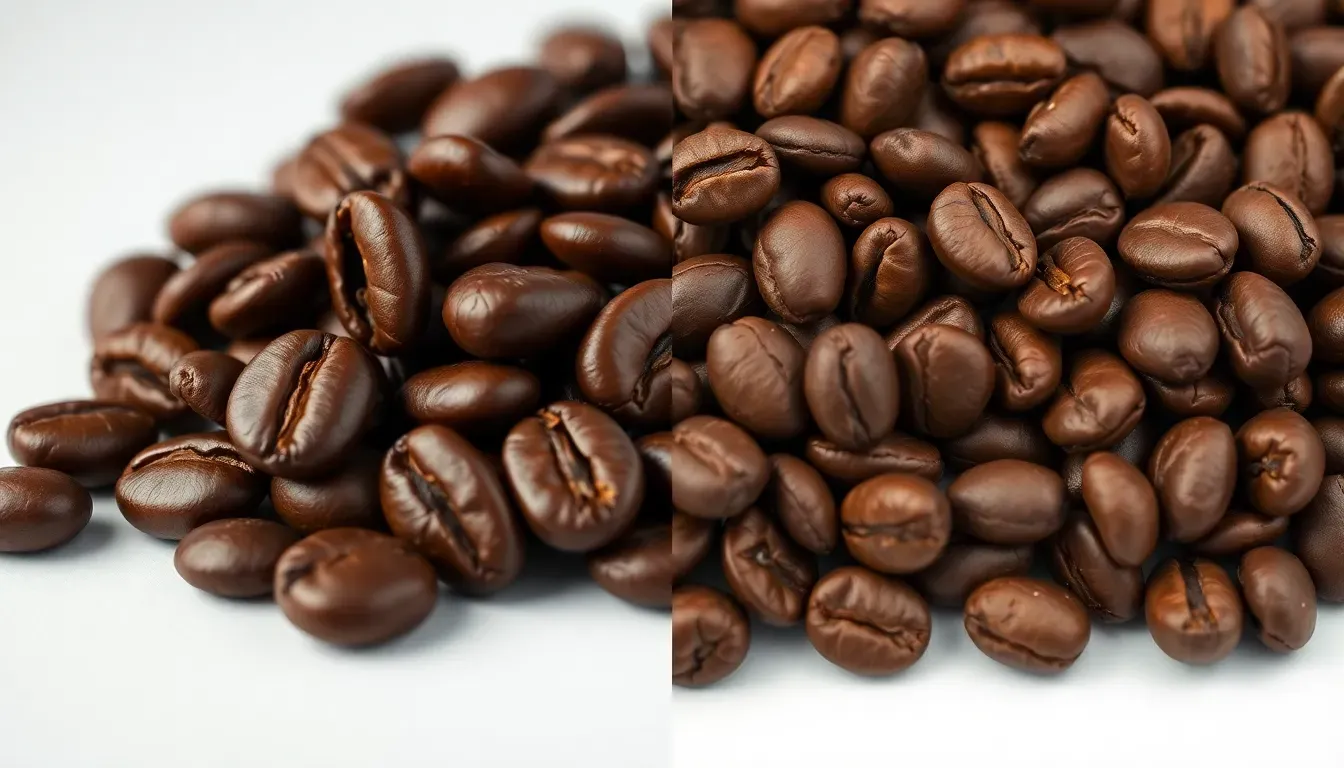
For espresso, I consistently recommend medium to medium-dark roasts. These roasts strike the perfect balance between preserving origin characteristics and developing the caramelized sugars that create espresso's signature body and crema. Light roasts can be too acidic when concentrated, while dark roasts often taste burnt and one-dimensional.
The crema factor: Crema formation depends on CO2 content and oil development, both of which are optimized in medium to medium-dark roasts. Too light, and you won't get sufficient oil development. Too dark, and the oils become overpowering.
Solubility considerations: Medium roasts have the right balance of soluble compounds for espresso's quick extraction time. Light roasts can under-extract in the short timeframe, while dark roasts can over-extract too quickly.
Blend vs. Single Origin for Espresso
This is where I might surprise you—while single origins are fantastic for pour-over methods, blends often perform better in espresso drinks. A well-crafted espresso blend combines beans with complementary characteristics. For example, a Brazilian base provides chocolate notes and body, while a touch of Ethiopian adds brightness, and perhaps some Colombian beans contribute caramel sweetness.
The complexity advantage: Blends can achieve flavor complexity that's difficult to achieve with single origins. A master blender can combine the best characteristics of multiple origins while minimizing their weaknesses.
Consistency throughout the year: Single origin coffees change seasonally, but blends can maintain consistent flavor profiles by adjusting component ratios as new crops arrive.
Milk compatibility: Blends are often designed specifically to work well with milk, creating harmony rather than competition between coffee and dairy flavors.
Top-Tier Espresso Recommendations
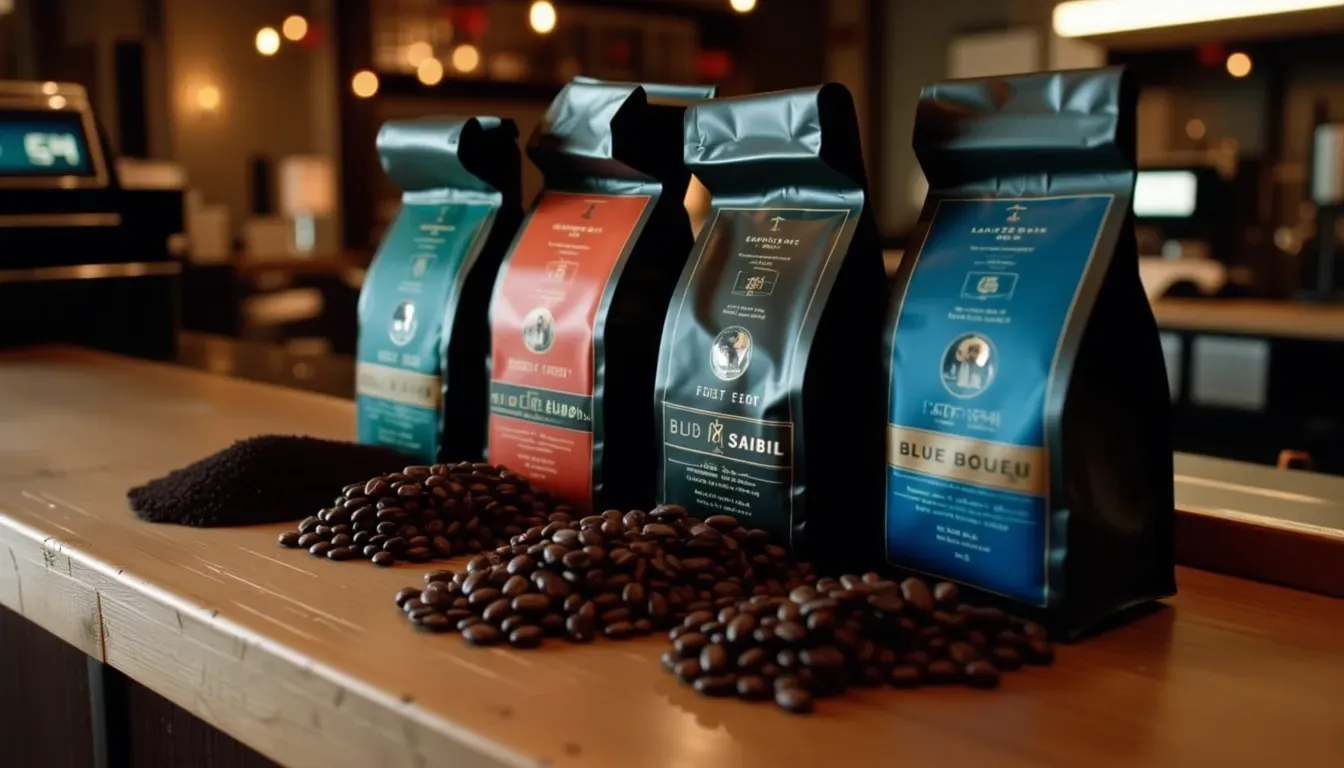
Based on extensive testing and industry recognition, here are some exceptional espresso options:
Counter Culture's Hologram - Elevate your coffee experience to a new dimension. Hologram is an extraordinary medium-roast blend that showcases the finest coffees from around the world. Tantalizing notes of ripe fruit and chocolate create a multidimensional flavor experience that's as complex as it is approachable. This blend typically consists of Ethiopian, Colombian, and Kenyan beans, creating what many consider one of the most complex yet approachable espresso blends available.
Why it works: The Ethiopian component provides bright fruit notes, Colombian adds balance and sweetness, while Kenyan contributes wine-like acidity and complexity. The roast level is carefully calibrated to preserve these characteristics while developing enough body for espresso.
Intelligentsia's Black Cat Classic - This syrupy and sweet espresso blend has been the staple of our lineup since the very beginning. It is a product of intensive lot selection and close, direct work with the farmers who produce its components. Supreme balance and a wonderful sweetness make this a classic. Known for its consistency and approachability, this blend has been a café staple since 1995.
The track record: Black Cat has remained consistent for decades, a testament to Intelligentsia's sourcing and blending expertise. It's forgiving for home baristas while still offering complexity for experienced users.
Blue Bottle's Bella Donovan - The Bella is the wool sweater of Blue Bottle blends -- warm, comforting, familiar. Wild and citrusy organic African paired with earthy organic Indonesian makes for a vivid and fairly complex Moka/Java blend. Perfect for milk drinks with its bold, chocolatey profile that stands up beautifully to steamed milk.
The milk drink champion: This blend was specifically designed to excel in milk-based drinks. The Indonesian component provides earthiness and body that cuts through milk, while the African component adds brightness and complexity.
Advanced Espresso Bean Selection
Density considerations: Higher-grown beans (above 1,200 meters) tend to be denser and require different grinding and extraction approaches. They often produce more complex flavors but can be more challenging to extract properly.
Age and extraction: Slightly aged beans (7-14 days post-roast) often extract more evenly for espresso, as the degassing process has stabilized.
Seasonal adjustments: Many cafés adjust their espresso blends seasonally, using different component ratios or entirely different origins to maintain flavor consistency as new crops arrive.
Single Origins That Excel in Espresso
That said, some single origins are absolutely stunning as espresso. Brazilian beans from regions like Cerrado or Sul de Minas offer natural chocolate and nut flavors that work beautifully in milk drinks. Guatemalan beans from Huehuetenango provide a lovely balance of body and brightness that I particularly love in cortados.
Brazilian excellence: Brazil's Pulped Natural process creates beans with the body needed for espresso while maintaining sweetness. Look for beans from Cerrado Mineiro or Sul de Minas regions.
Colombian complexity: High-grown Colombian beans from regions like Huila and Nariño offer excellent balance and can work beautifully as single-origin espresso when properly developed.
Central American standouts: Guatemalan Antigua and Costa Rican Tarrazú both have the body and balance needed for successful single-origin espresso.
Perfect Beans for Pour-Over and Drip Coffee
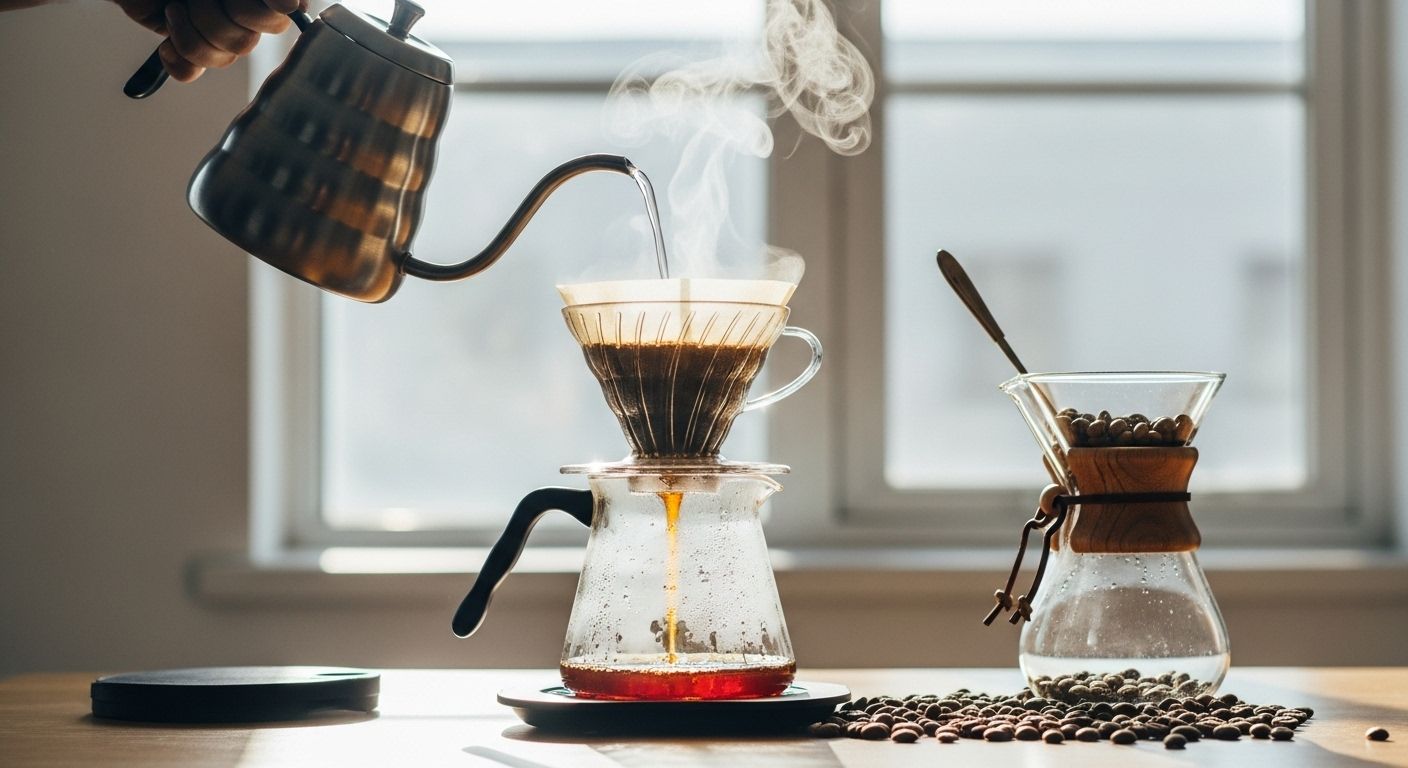
When you're making pour-over coffee or using a drip machine to recreate that café-style black coffee experience, you want beans that showcase clarity and complexity. Pour-over brewing is like a magnifying glass for coffee—it reveals everything, both good and bad.
The Art and Science of Pour-Over
Pour-over brewing gives you complete control over variables: water temperature, pour speed, agitation, and timing. This control allows you to highlight specific characteristics in your beans.
Extraction dynamics: Unlike espresso's pressure-driven extraction, pour-over relies on gravity and time. This gentler extraction is perfect for highlighting delicate flavors and aromatic compounds.
Water contact time: The longer contact time (3-6 minutes typical) allows for more complete extraction of complex flavor compounds, especially in lighter roasts.
Filter considerations: Different filters affect flavor. Paper filters provide clarity, metal filters allow oils through for more body, and cloth filters offer a middle ground.
Light to Medium Roasts: Highlighting Origin Character
For pour-over methods, lighter roasts are your friend. These roasts preserve the unique characteristics of the coffee's origin—the terroir, if you will. You'll taste the difference between a bright, wine-like Ethiopian Yirgacheffe and a balanced, nutty Guatemalan Antigua.
Acetic acid development: Light roasts preserve organic acids that create brightness and complexity. These acids are what make Ethiopian coffees taste wine-like or Kenyan coffees taste like black currant.
Volatile compound preservation: Light roasting preserves delicate aromatic compounds that would be destroyed at higher temperatures. This is why light roasts often have more complex aromatics.
Origin expression: With minimal roast interference, you can taste the true character of the growing region, processing method, and varietal.
Regional Recommendations by Origin
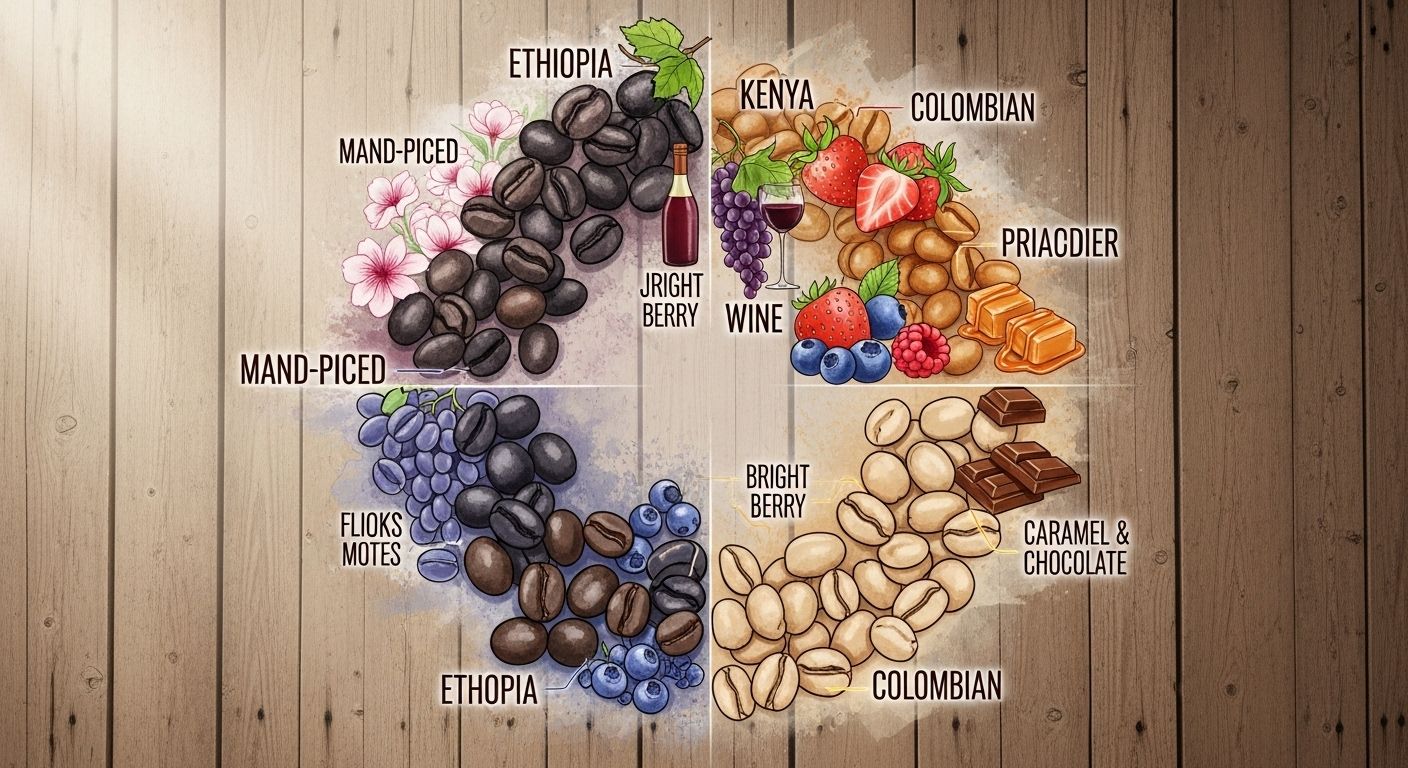
African Origins: Ethiopian and Kenyan beans are phenomenal for pour-over. Ethiopian beans often display floral, tea-like qualities with bright acidity, while Kenyan beans offer wine-like complexity with black currant notes. Look for specific regions like Yirgacheffe or Sidamo for distinctive flavor profiles.
Deep dive into Ethiopia: Ethiopian coffee comes from the birthplace of coffee, and the genetic diversity shows. Yirgacheffe offers floral, tea-like qualities; Sidamo provides wine-like characteristics; and Harrar gives fruity, wine-like notes with possible blueberry characteristics.
Kenyan excellence: Kenya's high altitude (1,400-2,000+ meters), volcanic soil, and unique varietals (SL28, SL34) create coffees with distinctive black currant acidity and wine-like complexity. The double fermentation washing process adds to their uniqueness.
Central and South American Origins: For those who prefer more familiar flavor profiles, Colombian and Costa Rican beans provide excellent balance with notes of caramel, chocolate, and nuts. These are perfect if you're transitioning from darker roasts to lighter ones. Guatemalan Antigua and Colombian Huila are particularly noteworthy.
Colombian complexity: Colombia's diverse microclimates create vastly different flavor profiles. Huila offers bright acidity with stone fruit notes, while Nariño provides orange and chocolate characteristics. The volcanic soil adds minerality and complexity.
Central American balance: Guatemala's Antigua region, surrounded by volcanoes, produces beans with spicy complexity and good body. Costa Rica's Tarrazú region offers bright acidity with citrus notes, while their honey-processed coffees add sweetness and complexity.
Island Coffees: Hawaiian Kona and Jamaican Blue Mountain (when you can find authentic versions) offer incredibly smooth, mild profiles that are perfect for showcasing brewing technique. However, be prepared for premium pricing due to limited production.
The Kona difference: True Hawaiian Kona (grown on the volcanic slopes of Mauna Loa) offers a unique flavor profile—smooth, mild, with low acidity and nutty undertones. The volcanic soil and tropical climate create ideal growing conditions.
Blue Mountain mystique: Jamaican Blue Mountain coffee, grown at high altitudes in the Blue Mountains, is known for its mild flavor, lack of bitterness, and perfect balance. However, much "Blue Mountain" coffee is actually Blue Mountain style, so verify authenticity.
Processing Method Impact on Pour-Over
Washed coffees: Clean, bright, acidic—perfect for highlighting origin characteristics in pour-over brewing.
Natural processed: Fruity, sweet, wine-like—can be incredible in pour-over but requires careful brewing to avoid over-extraction of fruity notes.
Honey processed: Balance of clarity and sweetness—offers the best of both worlds for pour-over brewing.
Advanced Pour-Over Techniques
Bloom importance: The initial 30-45 second bloom allows CO2 to escape and ensures even saturation. Fresh beans will bloom more vigorously.
Pour patterns: Circular pours ensure even extraction, while center pours can create different flavor profiles by emphasizing center extraction.
Water temperature: Light roasts often benefit from higher temperatures (205-210°F), while medium roasts work well at 200-205°F.
Cold Brew Champions: Beans That Shine Cold
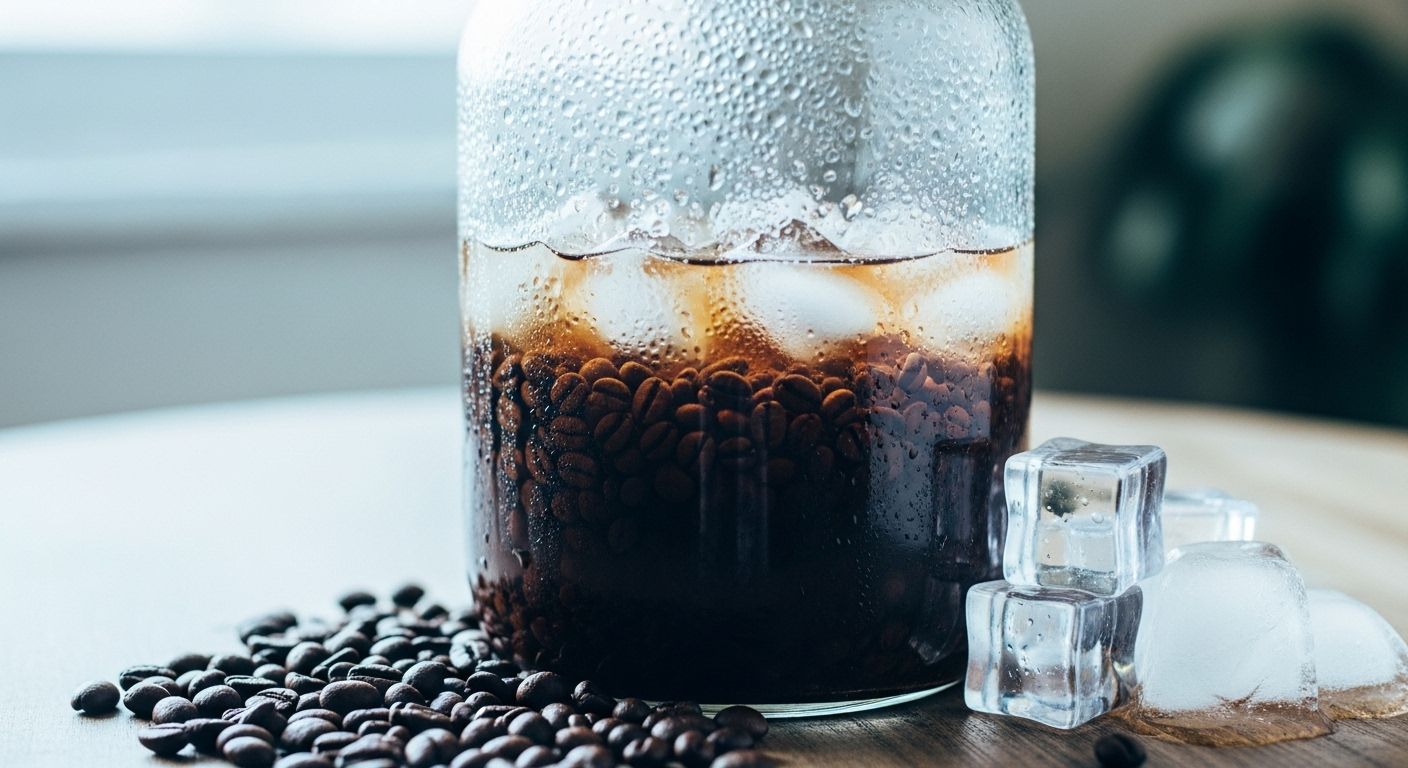
Cold brew has become a café staple, and the beans you choose can make or break this brewing method. The long extraction time and cold water create a completely different flavor profile than hot brewing methods.
The Science of Cold Extraction
Cold brewing extracts coffee compounds differently than hot brewing. The lower temperature means slower extraction, different solubility rates, and unique flavor development.
Slower extraction kinetics: Cold water extracts acids and sugars more slowly than bitter compounds, creating a naturally sweet, less acidic beverage.
Oil extraction: Cold brewing extracts fewer oils than hot brewing, creating a cleaner, less heavy mouthfeel.
Time compensation: What cold brewing lacks in temperature, it makes up for in time—typically 12-24 hours of steeping.
Medium to Dark Roasts for Cold Brew Excellence
For cold brew, I lean toward medium to medium-dark roasts. The longer extraction time means you need beans that won't become overly acidic but will still provide complexity. Dark roasts work well here because the cold brewing process mellows their intensity while preserving rich, chocolatey notes.
Avoiding over-acidity: Light roasts can become unpleasantly sour in cold brew due to the long extraction time and high coffee-to-water ratios.
Body development: Medium to dark roasts provide the body and mouthfeel that makes cold brew satisfying.
Chocolate and caramel emphasis: Cold brewing emphasizes the sweeter, chocolatey notes developed during roasting while minimizing harsh or bitter flavors.
Grind considerations: Remember that your grind size is crucial for cold brew. You'll want a coarse grind similar to what you'd use for French press. This prevents over-extraction during the long steeping process (12-24 hours typically).
Cold Brew Specific Recommendations
Brazilian and Colombian single origins work exceptionally well for cold brew, as do blends designed specifically for this method. Many roasters now offer cold brew-specific blends that are formulated for optimal extraction at room temperature or cold.
Brazilian excellence: Brazil's natural processing creates beans with inherent sweetness and chocolate notes that shine in cold brew.
Colombian balance: Colombian beans offer the perfect balance of sweetness and acidity for cold brew, especially those from lower altitude regions.
Cold brew blends: Look for blends specifically designed for cold brew—these often combine Brazilian and Colombian beans with small amounts of Central American coffee for complexity.
Advanced Cold Brew Techniques
Japanese iced coffee: Brewing hot coffee directly onto ice creates a different flavor profile than traditional cold brew—brighter, more acidic, with better aromatics.
Cold brew concentrate: Making concentrate (1:4 or 1:5 ratio) gives you flexibility to dilute to taste and create different serving styles.
Nitro cold brew: Adding nitrogen creates a creamy mouthfeel and enhances sweetness perception.
Milk Drink Mastery: Beans That Complement Dairy

When you're making lattes, cappuccinos, or flat whites, you need beans that can hold their own against milk while creating harmony rather than competition. This is perhaps the most challenging aspect of coffee selection because you're not just considering the coffee—you're considering how it interacts with milk.
The Chemistry of Coffee and Milk
When you add milk to coffee, you're creating a complex interaction of proteins, fats, acids, and sugars. Understanding this helps you choose beans that will create harmony rather than conflict.
Protein interactions: Milk proteins can bind with coffee tannins, reducing perceived bitterness and astringency.
Fat considerations: Milk fat carries flavor and creates mouthfeel, which means your coffee needs enough intensity to cut through it.
Sugar balance: Lactose adds sweetness that can either complement or clash with coffee's natural sugars and acidity.
Temperature effects: Hot milk changes the perception of coffee flavors, often emphasizing sweetness and reducing acidity.
Body and Boldness Requirements
Milk drinks require beans with enough body and boldness to cut through dairy. This is why many cafés use specific espresso blends for milk drinks—they're designed to maintain their character when combined with steamed milk. Look for tasting notes that mention chocolate, caramel, nuts, or brown sugar, as these flavors naturally complement milk's sweetness.
Body definition: Body refers to the physical sensation of coffee in your mouth—light, medium, or full. Milk drinks need medium to full body to avoid being overwhelmed by dairy.
Intensity requirements: The coffee needs enough flavor intensity to remain prominent when diluted with milk. This often means medium-dark roasts or specifically designed blends.
Sweetness compatibility: Coffees with natural sweetness (chocolate, caramel, brown sugar notes) work better with milk than highly acidic or floral coffees.
Flavor Pairing Principles
Think about flavor pairing when choosing beans for milk drinks. Chocolate and caramel notes naturally complement milk's sweetness, while bright, acidic coffees might clash. Brazilian, Colombian, and Guatemalan beans often work beautifully in milk drinks due to their inherent sweetness and body.
Complementary flavors: Chocolate, caramel, nuts, vanilla, and brown sugar notes all complement milk naturally.
Conflicting flavors: Bright citrus, floral, or wine-like characteristics can clash with milk, creating unpleasant combinations.
Regional preferences: Brazilian and Colombian beans are naturally suited for milk drinks, while many African coffees work better black.
Steamed Milk Science
Microfoam creation: Proper steaming creates microfoam—tiny, velvety bubbles that integrate smoothly with coffee.
Temperature considerations: Milk should be steamed to 140-150°F for optimal sweetness and texture.
Lactose enhancement: Heat enhances lactose sweetness, which affects how you perceive coffee flavors.
Alternative Milk Considerations
Oat milk: Higher fat content makes it closest to dairy milk for coffee compatibility. Works with most espresso blends.
Almond milk: Lower fat, nuttier flavor—pairs well with naturally nutty coffees but can overwhelm delicate flavors.
Soy milk: Can curdle with acidic coffees, works better with less acidic, more developed roasts.
Coconut milk: Strong flavor that can complement chocolate and caramel notes but may clash with bright, acidic coffees.
Storage: Protecting Your Investment
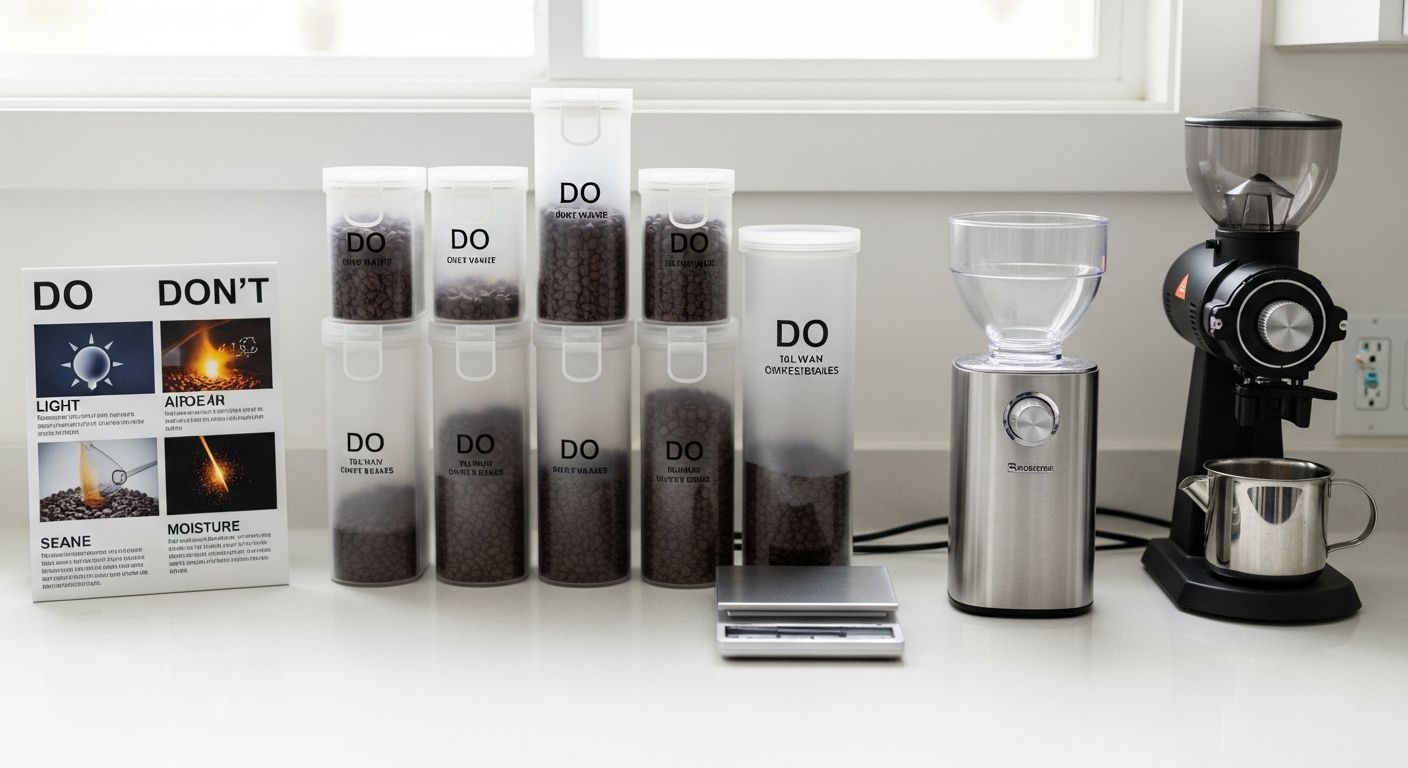
Once you've invested in quality beans, proper storage is essential to maintain their peak flavor. Coffee is a delicate agricultural product that degrades through several mechanisms, and understanding these helps you store it properly.
The Enemies of Fresh Coffee
Oxygen: The primary enemy. Oxidation breaks down flavor compounds and causes staleness.
Light: UV light accelerates the breakdown of aromatic compounds.
Heat: Speeds up all degradation processes.
Moisture: Can cause mold and accelerates staleness.
Time: Even under perfect conditions, coffee loses flavor over time.
Proper Storage Techniques
- Airtight containers: Store beans in opaque, airtight containers away from light, heat, and moisture
- Avoid the freezer: Contrary to popular belief, don't store coffee in the refrigerator or freezer unless you're storing unopened bags for extended periods
- Whole bean advantage: Buy whole beans and grind just before brewing for maximum freshness
- Portion control: Only buy what you can consume within 2-4 weeks of the roast date
Advanced Storage Considerations
One-way valves: Many coffee bags include one-way valves that allow CO2 to escape while preventing oxygen from entering. These bags can be excellent storage containers if sealed properly.
Vacuum storage: Vacuum-sealed containers can extend coffee life, but be careful not to crush delicate light-roasted beans.
Freezing protocol: If you must freeze coffee, divide it into single-use portions, vacuum seal, and only thaw what you'll use immediately.
Environmental factors: Store coffee in a cool, dry place with stable temperature. Avoid cabinets near stoves or windows.
Building Relationships with Local Roasters
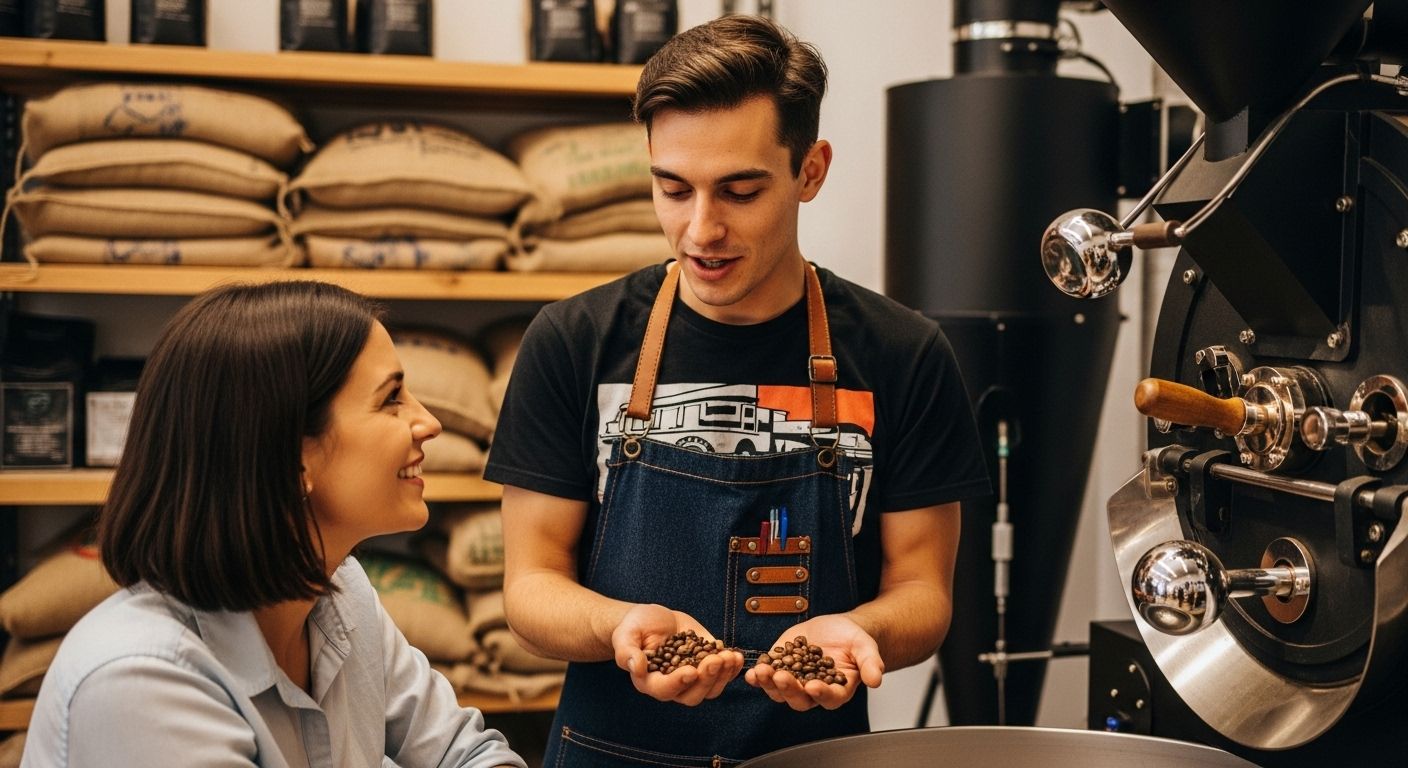
One of the most rewarding aspects of diving deeper into coffee is building relationships with local roasters. They can guide you toward beans that match your taste preferences and brewing methods. Many roasters are passionate educators who love sharing their knowledge with curious customers.
The Value of Roaster Relationships
Insider knowledge: Roasters know their beans intimately—how they behave, what brewing methods work best, and when new lots arrive.
Custom recommendations: A good roaster can recommend beans based on your specific taste preferences and brewing equipment.
Education opportunity: Many roasters love to share their knowledge about origins, processing, and roasting techniques.
Quality assurance: Local roasters often have better quality control than large commercial operations.
Questions to Ask Your Roaster
- What's the roast date on these beans?
- What brewing method do you recommend for this particular coffee?
- Can you explain the flavor notes and what to expect?
- Do you have any seasonal or limited-edition offerings?
- How do you recommend storing these beans?
- What's the story behind this particular lot?
Supporting Local Coffee Culture
Economic impact: Supporting local roasters keeps money in your community and supports small businesses.
Quality focus: Local roasters often focus on quality over quantity, leading to better coffee experiences.
Innovation: Many innovations in coffee come from small, independent roasters experimenting with new techniques.
Community building: Local coffee shops and roasters often become community gathering places.
Advanced Tips for Home Baristas
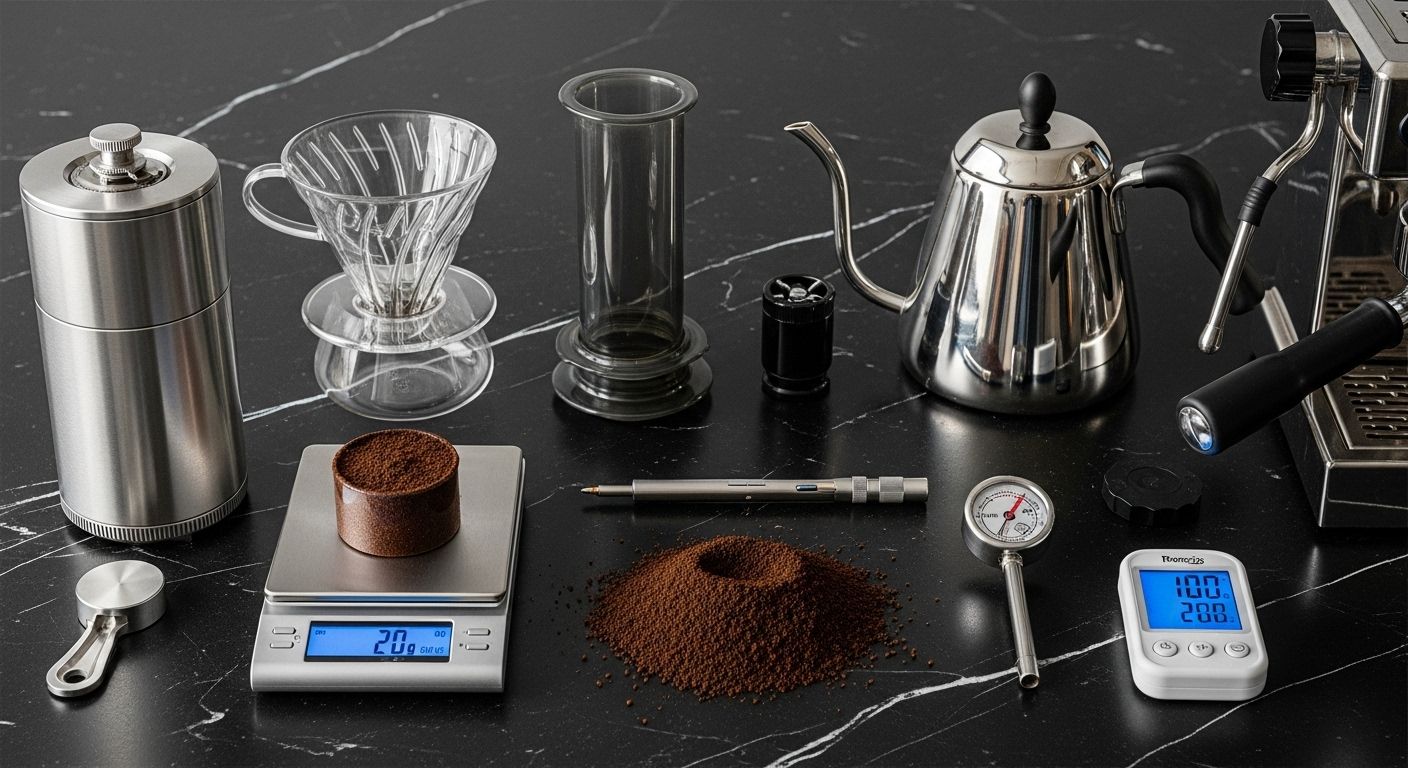
Water Quality Matters
Your water quality can make or break even the best beans. Use filtered water with balanced mineral content. The Specialty Coffee Association recommends water with 150-300 ppm total dissolved solids.
Mineral composition: Calcium and magnesium help extract coffee flavors, while sodium can create off-tastes.
pH considerations: Slightly alkaline water (pH 7-8) often works best for coffee extraction.
Chlorine removal: Always filter out chlorine, which can create medicinal off-flavors.
Third Wave Water: Some serious coffee enthusiasts use products like Third Wave Water to create ideal mineral content.
Grind Consistency
Invest in a quality burr grinder. Blade grinders create uneven particle sizes that lead to uneven extraction. For espresso, you'll need a fine, consistent grind, while pour-over methods work best with medium to medium-fine grinds.
Burr types: Flat burrs often provide more consistent particle size distribution, while conical burrs may preserve more aromatics.
Grind retention: Some grinders retain coffee grounds between uses, which can affect flavor with different beans.
Static issues: Some grinders create static that affects dosing and distribution.
Grind timing: Always grind just before brewing for maximum freshness.
Brewing Ratios
Start with these baseline ratios and adjust to taste:
- Espresso: 1:2 ratio (18g coffee to 36g liquid)
- Pour-over: 1:15 to 1:17 ratio (25g coffee to 375-425g water)
- Cold brew: 1:8 ratio for concentrate (125g coffee to 1000g water)
Advanced Brewing Techniques
Pre-infusion: Allowing coffee to bloom with a small amount of water before full extraction can improve flavor.
Temperature stepping: Some brewing methods benefit from starting with lower temperatures and increasing during brewing.
Agitation control: How much you stir or agitate the coffee during brewing affects extraction.
Timing precision: Using timers and following consistent protocols improves repeatability.
Troubleshooting Common Issues
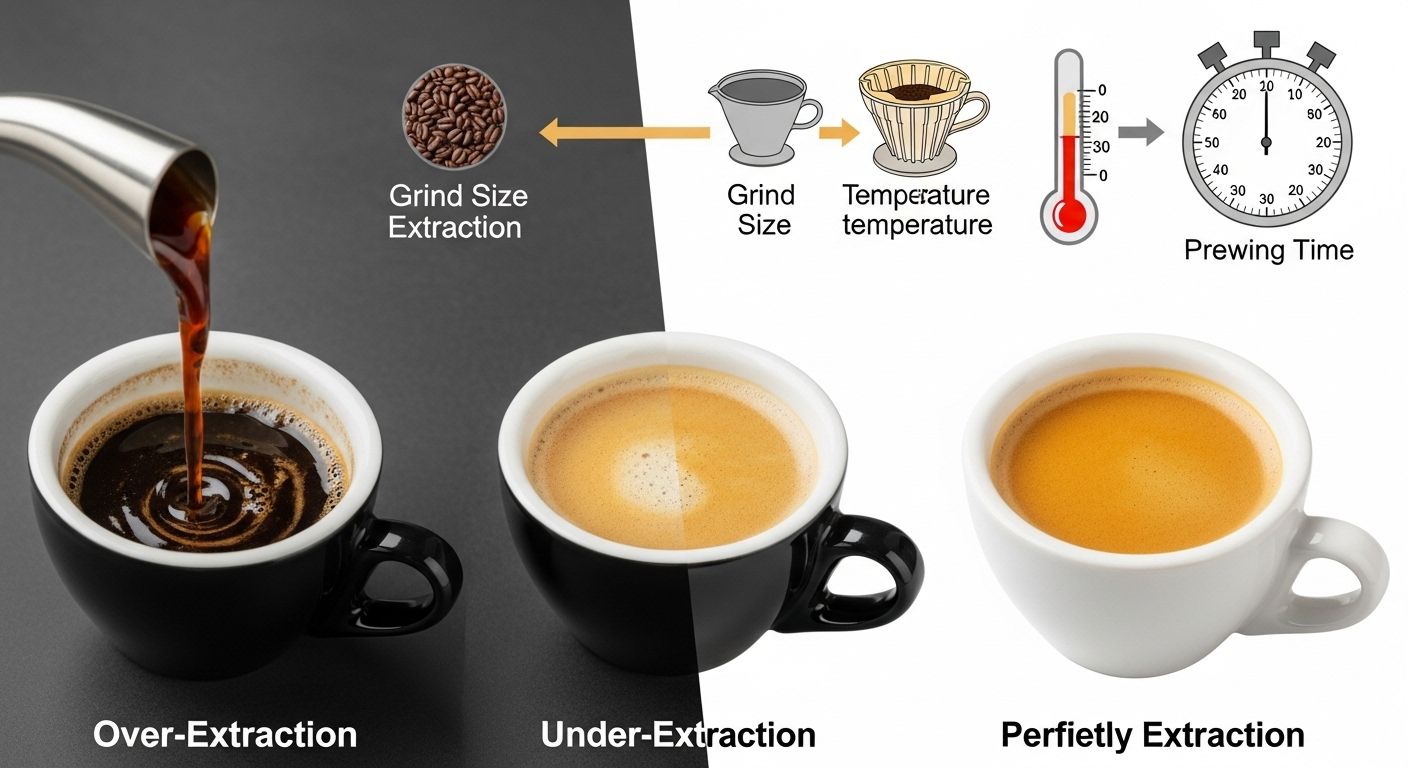
Sour coffee: Usually indicates under-extraction. Try a finer grind, higher water temperature, or longer brew time.
Bitter coffee: Often a sign of over-extraction. Try a coarser grind, lower water temperature, or shorter brew time.
Weak coffee: Increase your coffee-to-water ratio or try a finer grind.
Inconsistent results: Focus on consistency in your variables: grind size, water temperature, timing, and coffee-to-water ratio.
Advanced Troubleshooting
Astringent coffee: Often caused by over-extraction or poor water quality. Check your grind size and water mineral content.
Flat, lifeless coffee: May indicate stale beans, under-extraction, or poor grind quality.
Hollow or empty flavors: Often a sign of beans that are too fresh (under-degassed) or extraction issues.
Off-flavors: Can indicate contamination, poor storage, or water quality issues.
The Importance of Tasting Notes
Learning to identify flavors in coffee helps you troubleshoot and improve your brewing. Keep a coffee journal noting:
- Bean information (origin, roast date, processing)
- Brewing parameters (ratio, grind, time, temperature)
- Flavor observations
- What you liked or didn't like
- Adjustments for next time
The Economics of Great Coffee
Cost vs. Value
Quality coffee beans typically cost $12-25 per pound, compared to $4-8 for grocery store coffee. But consider:
- Higher quality beans are more flavorful, so you may use less
- Better extraction means you get more from each bean
- The experience and satisfaction factor
- Supporting sustainable farming practices
Budget-Friendly Strategies
Subscription services: Many roasters offer discounts for subscriptions, often 10-15% off retail prices Buying in season: Purchase beans when they're fresh from harvest for the best prices Local roaster relationships: Many local roasters offer loyalty programs or bulk discounts Group purchases: Split larger orders with friends or coworkers Focus on versatile beans: Choose beans that work well across multiple brewing methods
Investment Priorities
- Grinder first: A good grinder is more important than an expensive brewing device
- Scale second: Consistent ratios are crucial for repeatable results
- Water filtration: Clean water is essential and relatively inexpensive
- Quality beans: Once your equipment is solid, invest in better beans
- Advanced equipment: Expensive espresso machines and specialty brewers come last
The Future of Coffee: Trends and Innovations
Processing Innovations
Fermentation control: Producers are experimenting with controlled fermentation environments, creating new flavor profiles through precise temperature and pH management.
Carbonic maceration: Borrowed from winemaking, this anaerobic fermentation process creates unique fruit-forward characteristics.
Experimental processing: From wine yeast inoculation to extended fermentation periods, producers are pushing boundaries to create entirely new flavor experiences.
Sustainability and Ethics
Climate change adaptation: As traditional growing regions face climate challenges, producers are adapting with new varieties and growing techniques.
Regenerative agriculture: Focus on farming practices that improve soil health and sequester carbon.
Blockchain traceability: New technologies are making it easier to track coffee from farm to cup, ensuring fair compensation and quality standards.
Direct trade evolution: More sophisticated relationships between roasters and producers, often involving multi-year contracts and shared investment in farm improvements.
Technology in Coffee
Precision brewing: Smart brewing devices that can replicate exact recipes and maintain consistent results.
AI-powered roasting: Machine learning algorithms helping optimize roasting profiles for specific beans and desired outcomes.
Flavor mapping: Advanced analytical techniques helping identify and predict flavor compounds in coffee.
Home technology: Consumer-grade equipment becoming more sophisticated and accessible.
Building Your Coffee Journey: A Progressive Approach
Beginner Phase (Months 1-3)
Equipment essentials:
- Decent burr grinder ($100-200)
- Digital scale ($20-40)
- Simple pour-over setup (V60 or Chemex, $30-50)
- Thermometer or variable temperature kettle ($50-100)
Bean strategy:
- Start with medium roasts from reputable roasters
- Focus on Central and South American origins (more forgiving)
- Try 2-3 different regions to understand your preferences
- Keep a simple tasting journal
Skill development:
- Master basic pour-over technique
- Learn to taste and identify basic flavors
- Understand grind size effects
- Practice consistent ratios
Intermediate Phase (Months 4-12)
Equipment upgrades:
- Better grinder if needed ($300-500)
- Multiple brewing methods (French press, AeroPress)
- Espresso setup if interested ($500-1500)
- Water filtration system
Bean exploration:
- Try African origins and lighter roasts
- Experiment with different processing methods
- Compare the same origin from different roasters
- Try seasonal and limited offerings
Skill development:
- Develop palate for subtle flavors
- Learn to adjust brewing parameters
- Master milk steaming if doing espresso
- Understand seasonal coffee availability
Advanced Phase (Year 2+)
Equipment mastery:
- High-end grinder ($800+)
- Professional-grade espresso machine
- Specialty brewing devices (Acaia scales, Decent espresso machines)
- Home roasting equipment (if interested)
Bean expertise:
- Direct relationships with roasters
- Micro-lot and competition coffees
- Understanding terroir and varietal differences
- Seasonal buying and storage strategies
Skill mastery:
- Consistent, excellent brewing across methods
- Advanced palate development
- Teaching others
- Possibly home roasting
Creating Your Personal Coffee Profile
Acidity preference: Do you enjoy bright, wine-like coffees or prefer lower-acid, chocolatey profiles?
Body preference: Light and tea-like, or full and syrupy?
Flavor categories: Fruity and floral, nutty and chocolatey, or spicy and complex?
Brewing method preference: Quick and convenient, or ritualistic and involved?
Milk drink ratio: Primarily black coffee, mostly milk drinks, or a mix?
Seasonal Coffee Planning
Spring (March-May)
- African coffees at their peak freshness
- Lighter roasts for warming weather
- Iced coffee and cold brew preparation
- Ethiopian and Kenyan single origins
Summer (June-August)
- Cold brew focus
- Japanese iced coffee techniques
- Still enjoying African coffees
- Experimentation with brewing methods
Fall (September-November)
- Central American harvest beginning
- Transition to slightly darker roasts
- Preparation for espresso season
- Colombian and Costa Rican new crop arrivals
Winter (December-February)
- Peak espresso and milk drink season
- Brazilian and other South American new crops
- Comfort-focused brewing
- Holiday blend exploration
Advanced Cupping and Tasting
Setting Up a Home Cupping
Equipment needed:
- Cupping bowls or small glasses
- Cupping spoons
- Hot water (200°F)
- Timer
- Notebook for observations
Basic cupping protocol:
- Grind coffee medium-coarse (8g per 150ml water)
- Smell the dry grounds
- Add hot water and let steep 4 minutes
- Break the crust and smell the aroma
- Remove floating grounds
- Taste at different temperatures stages
Developing Your Palate
Progressive tasting: Start with obvious differences (light vs. dark roast) and work toward subtle distinctions.
Comparative tasting: Always taste multiple coffees side by side to highlight differences.
Temperature awareness: Notice how flavors change as coffee cools.
Descriptive vocabulary: Build a vocabulary for flavors, moving beyond "good" and "bad" to specific descriptors.
Understanding Coffee Defects
Common defects and their causes:
- Sour/underdeveloped: Insufficient roasting
- Baked: Too slow roasting
- Scorched: Too fast/hot roasting
- Quakers: Underdeveloped beans that didn't roast properly
- Fermented/overfermented: Processing issues
The Global Coffee Community
Coffee Culture Around the World
Italian tradition: Focus on espresso perfection and milk drink mastery Scandinavian approach: Light roasts and filter coffee excellence Japanese precision: Meticulous brewing techniques and attention to detail Australian innovation: Flat white culture and coffee quality focus American evolution: From convenience to craft, embracing diversity
Participating in Coffee Culture
Local coffee shops: Support and learn from your local coffee community Coffee events: Attend cuppings, latte art competitions, and coffee festivals Online communities: Join forums, social media groups, and virtual tastings Home brewing groups: Start or join local home brewing meetups Coffee education: Take classes from roasters or coffee organizations
Conclusion: Your Journey to Café-Quality Coffee

Creating café-style drinks at home is a journey of discovery, not a destination. It's about understanding how different beans behave in various brewing methods and finding what speaks to your palate. Start with the recommendations I've shared, but don't be afraid to experiment. Try single origins from different regions, compare various roast levels, and pay attention to how different beans perform in your favorite brewing methods.
Remember, the best coffee beans are the ones that bring you joy in your daily ritual. Whether that's a bright Ethiopian pour-over that starts your morning with complexity and brightness, or a rich Brazilian espresso that creates the perfect afternoon cappuccino, the right beans will transform your home brewing into something truly special.
The beauty of coffee lies not just in its flavor, but in the connections it creates—with the farmers who grew it, the roasters who crafted it, and the moments of pause it provides in our busy lives. When you choose quality beans and brew them with intention, you're not just making coffee; you're participating in a global community of coffee lovers who understand that this simple beverage has the power to make any moment a little more special.
Your Next Steps
- Assess your current setup: What equipment do you have, and what's your next logical upgrade?
- Define your preferences: What flavors do you enjoy, and what brewing methods appeal to you?
- Find your local roaster: Build a relationship with someone who can guide your bean selection
- Start experimenting: Try new origins, processing methods, and brewing techniques
- Keep learning: Coffee is endlessly complex—embrace the journey of discovery
The Continuous Journey
Coffee mastery isn't about reaching a final destination—it's about continuously refining your understanding and appreciation. Every new bean teaches you something, every brewing session offers opportunities for improvement, and every cup connects you to a global community of passionate coffee lovers.
The seasonality of coffee means there's always something new to discover. As harvest cycles bring fresh crops from different regions, as your palate develops and becomes more sophisticated, and as new processing techniques and varieties emerge, your coffee journey will continue to evolve.
Most importantly, remember that the "perfect" cup of coffee is the one you enjoy most. While technical knowledge and proper technique are important, coffee is ultimately about pleasure, comfort, and connection. Trust your palate, experiment with confidence, and don't be afraid to break conventional rules if it leads to a cup you love.
So go forth, experiment, and most importantly, enjoy the journey. Your perfect cup is waiting to be discovered, one bean at a time. The world of specialty coffee is vast and welcoming, filled with passionate people eager to share their knowledge and help you discover the incredible diversity and complexity that coffee has to offer.
Want to dive deeper? Consider keeping a detailed coffee journal to track your preferences, join local cupping sessions to develop your palate, or explore subscription services from reputable roasters to discover new origins and processing methods throughout the year. The coffee community is incredibly welcoming—don't hesitate to ask questions, attend events, and share your own discoveries along the way.

Imani Wells
For years, I found stories in the steam of the espresso machine and the conversations buzzing around my coffee shop. Now, I have the profound joy of putting those everyday moments of connection onto the page for you.
